|
The 'camera don't lie" is a commonly held 'fact'.
Those who have been to the movies will know how wrong this can be, with the spectacular effects seen in some
many. With the advent of digital photography, such trickery is becoming much easier for more people, those who
have the need or imagination.
Orchid photography plays an important part in orchid growing, especially the orchid awards system, recording
plants and flowers that have been selected as species. In the past transparencies have been used to provide a lasting
record of those flowers, as this media gave the most accurate reproduction. If duplicated they can be altered,
but as most are processed by professional laboratories, most people would not do this.
Colour prints, now more widely used, do not have the same colour accuracy. The quality of processing is not
so good, and with the printing machines colour changes are easily achieved where there is a desire and a good (or
poor) operator. also, different photographic emulsions can vary in their ability to record accurate colour; mauve
in particular can cause problems for many.
Digital cameras, usually supplied with colour enhancement software for use on a computer, are totally unreliable
as far as colorur reproduction is concerned, because of the ease changes to the image can be made even by those
with minimal equipment.
Even with the very basic programs, significant changes to colours are possible, and if you adopt sophisticated
procedures, anything is possible. The following examples (except the first example) were all completed within seconds.
If you want to rely on photographs to give a record of flower colour, then you need to appreciate what is possible.
Digital photography is great, but the results may destroy the very aspect you are trying to record, an accurate
and reliable record of the colour. Other aspects of the flower are recorded, although even these can be readily
distorted if required, as indicated by the last two images below.
If the original image includes a image of a standard colour card, with known controlled colours, then the reproduced
image can be adjusted back to very near the original image, and this is what may have to be introduced to ensure
integrity of the system and reliability in the reference material.
Next tile you see a spectacular colour image of a flower, you need to ask yourself 'is it genuine?'.
Examples have also occurred in this country where plants have been judged in venues where the existing artificial
light has been far removed from producing a 'natural light spectrum. One show had the main exhibition hall with
lights almost totally lacking 'red' light, with the result that any plant with a red colour came out 'magnificently
dark, but that is not the only show where lighting has 'confused the colour judging process. Colour is a very important
part of the judging process, with this making up some 30% of the final score in most systems. A large number of
people seem to be unaware of the significance of the quality of light on perceived colour, but with many
different light sources now available, there is a need for a greater appreciation of this element, especially where
flower colour is still considered so important. Remember, it is the quality of light, not the quantity
that we are discussing here. There are natural spectrum lights available which will give a 'true' colour; most
video and photographic lights fall into this category, and especially for final judging, perhaps such lighting
needs to be used.
Remember, what you think you see may not really be what you see!!
I do not wish to suggest that there is dishonesty in the judging system or by photographers and
owners, but people do need to be aware of what can be done, and with photography of awarded plants so important,
there is a need to know some of the issues involved.
.Please note - images will take a few moments to fully load !
The changes to the images in the following examples are in some cases extreme - but more subtle
changes are harder to detect and can also produce desirable results if you want to 'improve the original image.
All the changes to the cattelya image took only a few seconds each to complete.
|
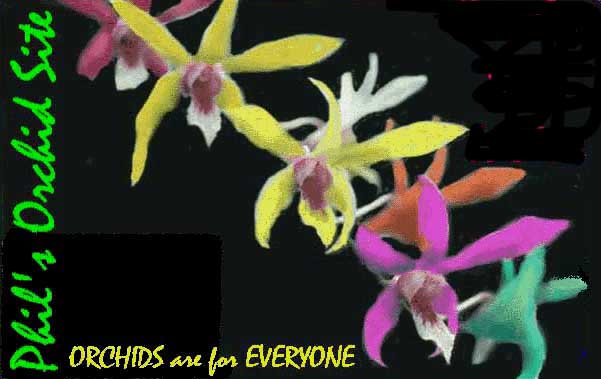
|
An example of a retouched photo -using a imaging program to 'repaint' the image.
The success of this is dependent on the time spent on creating and detailing the correct effect. |
|
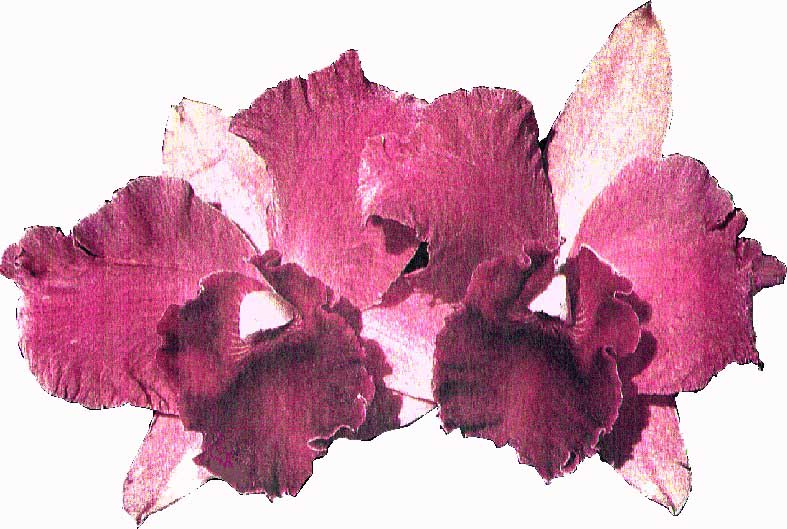
|
A 'normal' scanned image.
This image originally showed unsightly foliage and display material, which has been removed with a photo retouching
programme. |
|
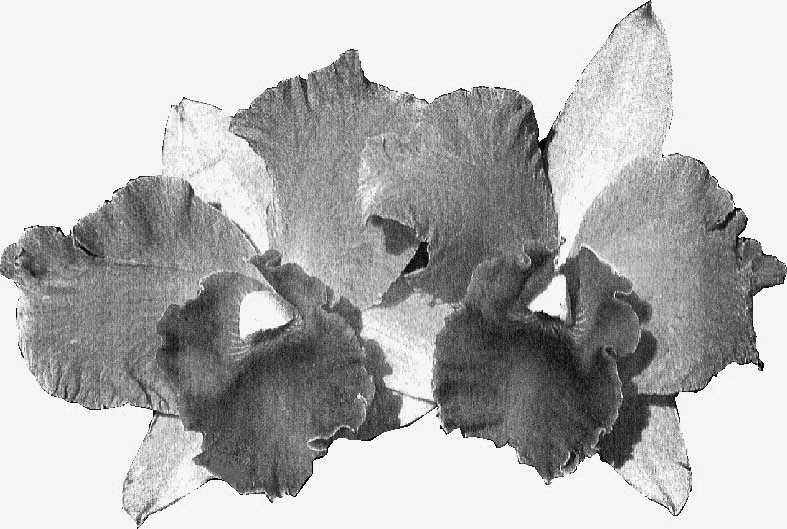
|
A colour photo educed to black and white |
|
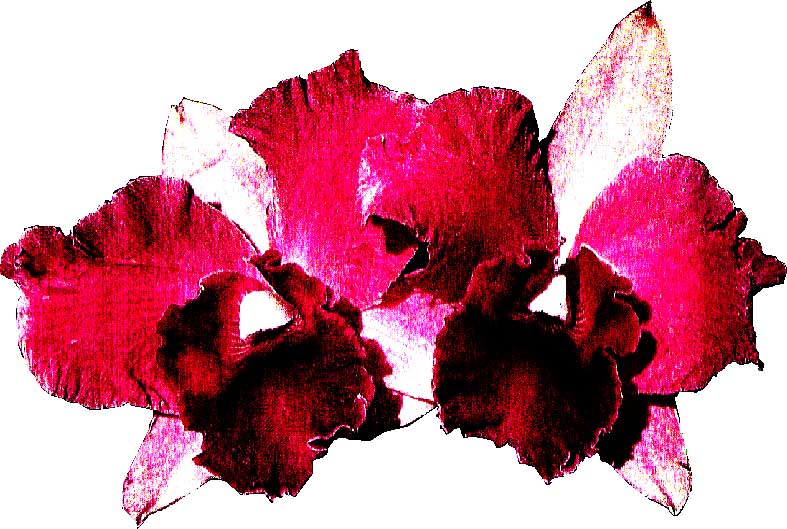
|
A photo intensified by brightness and contrast. Most printed and screen illustrations will have this done,
as the images are more striking in published material
The white background flood filled with white to standard colour, and the anther cap painted white and shaded to
original in this and following examples |
|
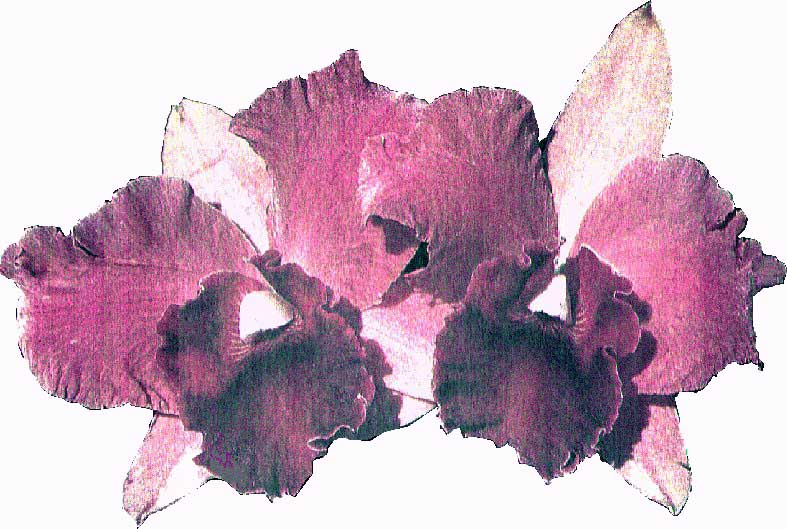
|
The use of hue and saturation controls to change colour |
|
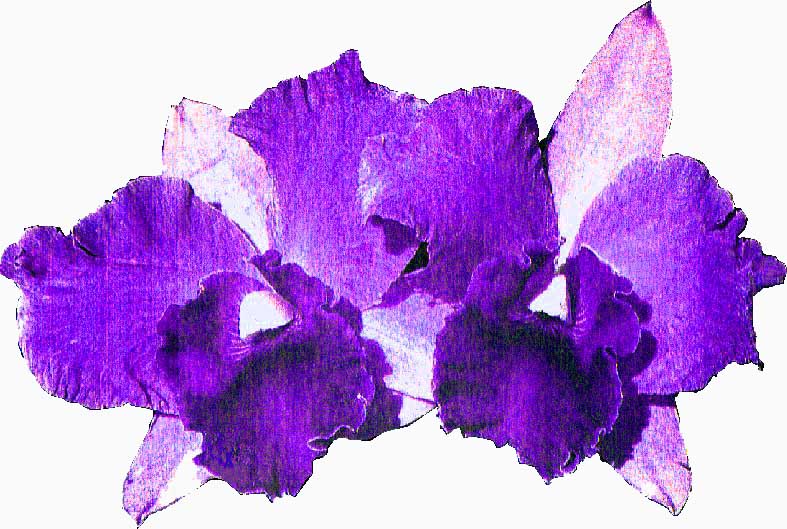
|
The use of hue and saturation controls to change colour. Similar to above, but extreme |
|
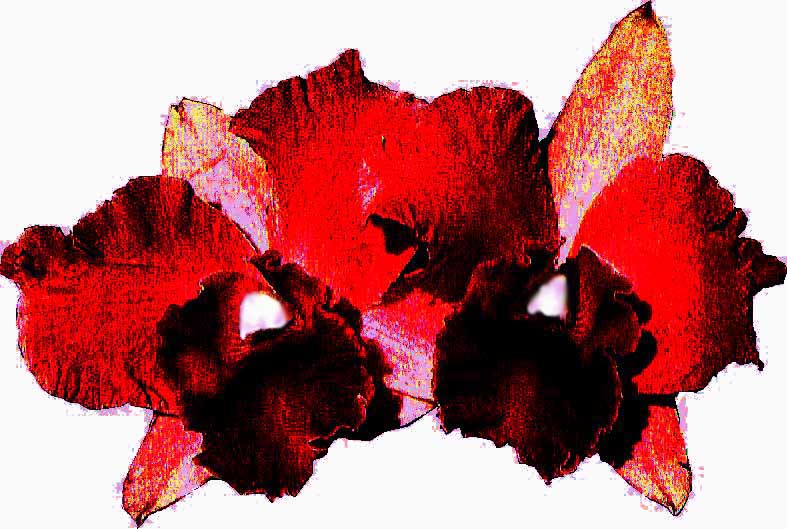
|
The base photo altered by changing the colour controls hue and saturation, brightness and contrast) to achieve
a major colour change to the image |
|
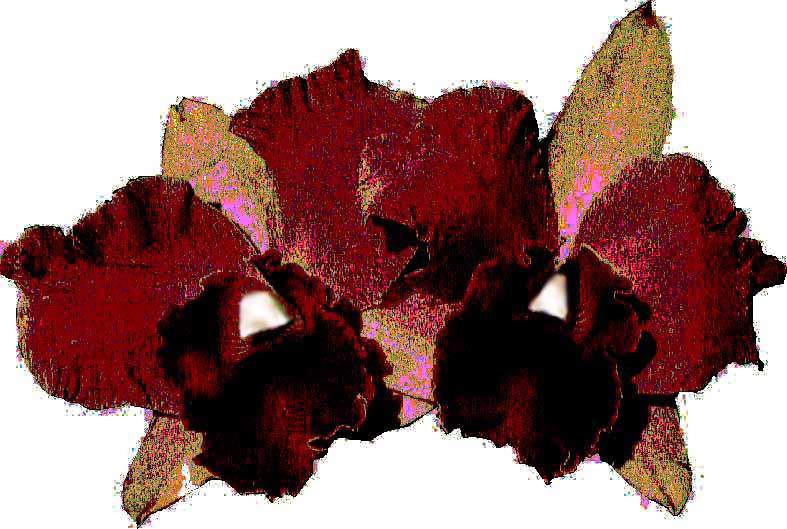
|
The base photo altered by changing the colour controls (hue and saturation) to achieve a major colour change
to the image |
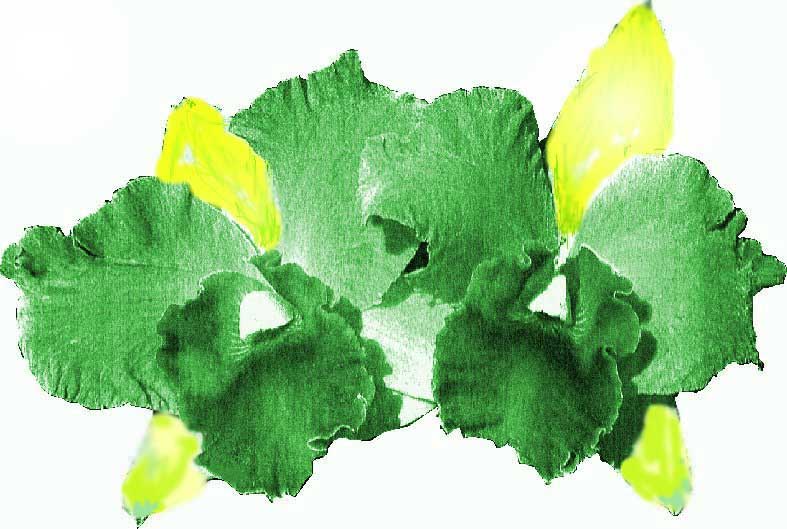 |
How about something different. Come on you plant breeders, try this !!
Hue and saturation, plus partial repaint. |
|
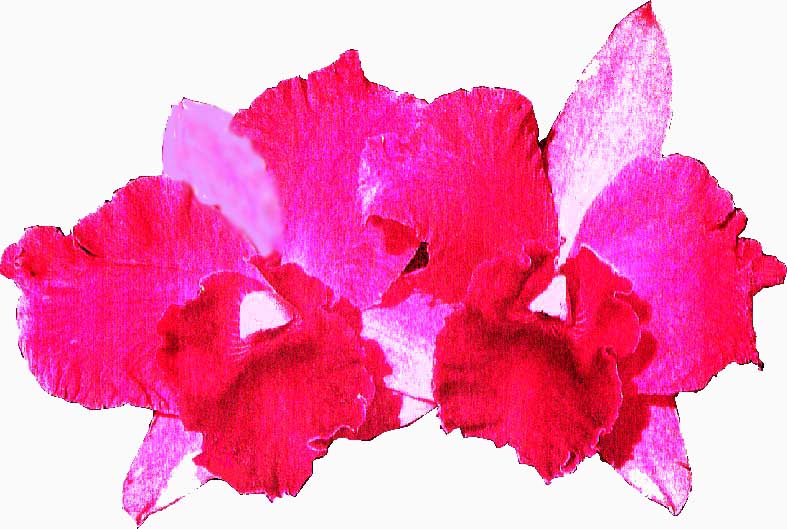
|
The base photo altered by changing the colour controls (hue, saturation, brightness and contrast) to achieve
a major colour change to the image |
|
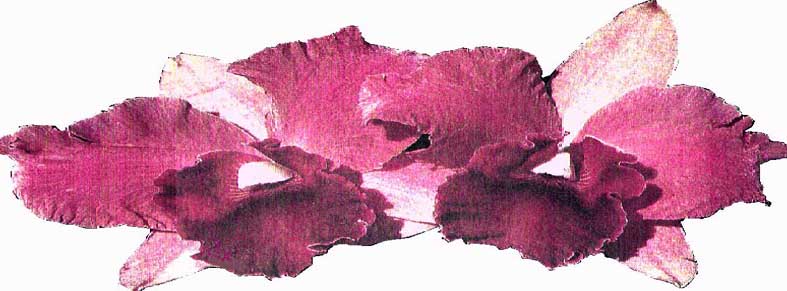
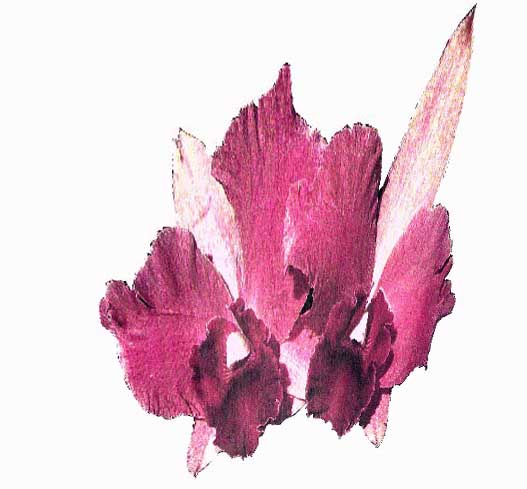
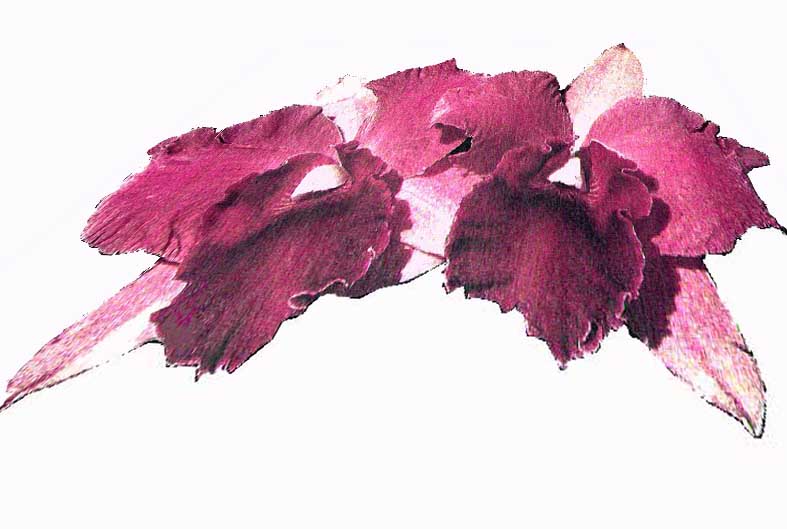
|
Even shape is no certainty, as the following distortions show
The top simply by changing the dimensions of the image
The second by digital distortion - in this case changing the flower image into a 'wedge' shape, reducing
the lip to relative insignative .
The third image reverses the above (middle) distortion, emphasizing the lip over the rest of the flower. |
It is appropriate to note that what has been done here is not sophisticated trickery,
but things that can be done by most readily and cheaply available photo manipulation packages using digitilised
images (direct from digital camera or scanned images).
Perhaps it may make you think about the implications.
SEE ALSO: Photo techniques page
|